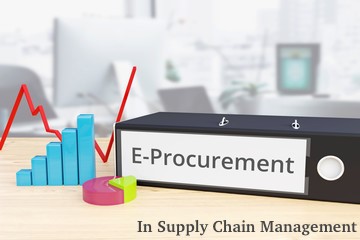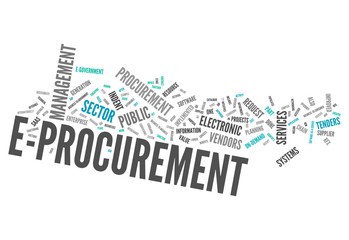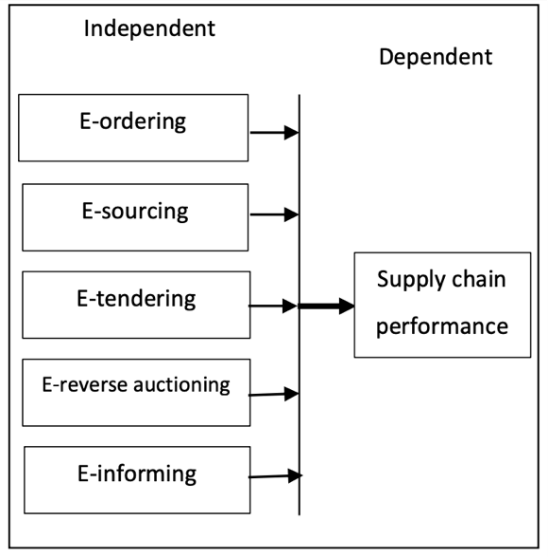
The introduction of E-Procurement:
Price and availability are not the only factors to be considered in a purchasing decision, especially now that a robust supply chain has become an unmissable element for every company in today’s business climate. The supply chain sector is always changing and adapting and business owners must be able to keep up and adapt as needed. Improved digitization and automation within e-business and e-commerce is a leading option.
Managing the complex web of advantage logistics and supply chain operations is both complicated and streamlined by e-commerce trends. It is important that those doing business online understand the connection and relationship these two sides of the same coin share.
The dynamic of business worldwide is changing rapidly due to fast-growing technological advancements. The ease of accessibility of this technology causes many organizations to shift towards E-Procurement as an effective and strong supply chain support system.
Innovative processes and systems like this can help companies reach operational efficiencies, sustainability, and profitability goals. All online businesses must keep a sharp eye on logistics and purchasing trends. This is true whether a business is looking for where to get products to sell on Shopify or any other finer details involved with e-commerce management.
Using E-Procurement for Advantage Logistics Management
The use of E-Procurement has recently increased as technologies positively affect different sectors worldwide. E-procurement, known as ‘electronic procurement’ or ‘supplier exchange’, is changing how companies are sourcing their goods and services.
Advantage logistics and an omnichannel supply chain help managers and business owners improve procurement online and simplified business processes. According to (Namulo, 2017), “E-Procurement is the acquisition of goods, services or works from an external source. In procurement, it is necessary to ensure that the goods, services, or works are appropriate and that they are procured at the best possible cost to meet the purchaser’s needs in terms of quality, quantity, time, and location.”
Over the last ten years, institutions have used more electronic tools to manage their procurement activities. Organizations in both public and private sectors are adopting systems such as the Electronic Data Interchange tool (EDI), Enterprise Resource Planning (ERP), and of course, the internet to benefit them when sourcing their goods (Adebayo, Dec 2015).
Advantages/Disadvantages of E-Procurement
E-procurement is a tool that yields benefits in all kinds of ways. It enables companies to decentralize operational processes and centralize strategic procurement processes. This approach to advantage logistics results in higher transparency and integrity, as well as reducing transaction cost and boosting decision-making processes.
E-procurement enables price negotiation and supplier evaluation. It also allows selection to be automated between organizations and their suppliers, which prevents time consumption. It helps reduce human errors, increase operational speed and enable staff to focus on other tasks.
Moreover, e-procurement enables companies to have a good workflow that facilitates end-users self-services. The inflows/outflows of goods through the supply chain improves as the tracing and tracking of those goods are automated, reducing emergency shipments.
Institutions can visualize their purchasing behaviors to control purchasing management and save costs by identifying leverage buying power (digital, n.d.). Being connected to external supply chains and enterprise resource planning (ERP) enables companies to get a better overview of supplier transactions and information by sharing real-time data through ERP systems, improving communication (digital, n.d.).
It is important to note that there are also obstructing factors that prevent implementing effective procurement for some e-commerce businesses. Lack of strong business relationships, financial support, and organizational priorities can also form obstacles. Developing countries are usually late adopters and do not invest money into early adopters’ trends and often struggle with advantage logistics and more complex supply chain and online business logistics within the global supply chain

Concept of Implementing E-procurement in Online Stores and Businesses
Electronic procurement innovations (EPIs) are being utilized by many businesses to improve their supply chain and advantage logistic processes. EPIs support the different parts of businesses’ core procurement process, such as supplier selection, order placement, order fulfillment, supply chain tools usage, payment settlement and ecommerce fraud protection.
Many organizations use the scheme below to help implement e-procurement into their supply chain (Namulo, 2017). Successful implementation of e-procurement depends on strong good management to achieve the firm’s performance goals and to maintain high levels of customer service. This makes it easier to target audience groups and use internet technology to sell products and services more efficiently.
It is essential to be aware of what adopting e-procurement means on a long-term and short-term basis. E-procurement has become a powerful tool resulting in a competitive advantage for many businesses. It is integrated into many firms’ overall strategies as the role of IT has evolved from productivity to a strategic tool (KANDA, 2017).

(Namulo, 2017).
Five Forms of E-Procurement to Know:
Understanding the inner workings of e-commerce, e-procurement, and e-business operations can help owners and managers in the short and long term. E-commerce fraud protection and other vital processes are easier when team members know what to expect along the way.
Supply and demand cycles and consumer buying habits have been altered by the COVID-19 pandemic and businesses must shift focus to compensate. An electronic procurement system can be categorized into five main applications within advantage logistics, which consist of E-ordering, E-sourcing, E-tendering, E-auctioning, and E-informing.
- E-ordering: is a popular option. Based on (Zaman, 2019), E-ordering captures electronic data, including orders, requests, and information received by the customer. From the supplier’s side, E-ordering can reduce errors and eliminate papers as invoices are automatically generated from the order information through the internet (Edicom, 2020).
- E-sourcing is described as selecting and identifying suppliers based on specific requirements. This approach allows the firms to choose their preferred suppliers considering their competitive aspects.
- E-tendering is when the suppliers receive the invoices and the purchase requests. This process allows both suppliers and buyers to realize their online transactions. Moreover, the procedure covers the tender requirements, which will be exchanged electronically through the CRM platforms (Zaman, 2019).
- E-auctioning: Online reverse Auctions facilitate the buyer’s ability to select suitable suppliers to buy products or services. Instead of negotiating with several suppliers before choosing one, this process helps with reducing the cost of contact and providing feedback and privacy (Namulo, 2017).
- E-informing: This method includes assembling and gathering information regarding purchases of buyers and suppliers by using web-based technology (Zaman, 2019). It leverages the power of digital platforms and data-sharing systems to strengthen businesses.

The supply chain performance is dependent on each of the stated independent e-procurement steps. These steps aim to improve the overall supply chain performance. (Zaman, 2019).
Master E-Procurement Processes Today With Help From Industry Leaders
The supply chain performance is dependent on each of the stated independent e-procurement steps. These steps aim to improve the overall supply chain performance. Would you like to know more about adopting E-Procurement within your supply chain? Contact one of ModusLink’s Industry experts today to get started with advantage logistics.
Bibliography:
Adebayo, V. &. (Dec 2015). Adoption of e-Procurement Systems in Developing Countries: A Nigerian Public Sector Perspective. In V. &. Adebayo, 2015 2nd International Conference on Knowledge-Based Engineering and Innovation (KBEI) (Vols. pp. 20-25, pp. 20-25). Tehran, Iran: IEEE.
Cheney, C. (2020, July 01). How COVID-19 has advanced the case for procurement reform. Retrieved from Devex.com. demery, P. (n.d.). Digital commerce 360 . Retrieved from digitalcommerce360.com.
digital, W. (n.d.). What is e-procurement . Retrieved from Waxdigital.com.
Edicom. (2020, March 12). What Are Electronic Orders? Benefits and Success Cases in Europe.
Retrieved March 2020, from Edicomgroup.com.
KANDA, V. I. (2017, April). Factors Affecting the Adoption of e-Procurement Systems among
International Non-Governmental Organisations in Kenya. International Journal of Academic Research in Accounting, Finance and Management Sciences, 7(2), 164-176.
Kapepo, S. K. (2019, July ). The Role of Institutional Pressures in the Adoption of e-Procurement
in Public Institutions in Developing Countries: The Case of Lesotho. The African journal of information systems, 11(3 ), 232-248.
Mwangi, E. W. (2016, August 19). EFFECTS OF E-PROCUREMENT ON PROCUREMENT
PERFORMANCE IN HOSPITALITY INDUSTRY IN KENYA: CASE OF SAROVA CHAIN OF HOTELS. International Academic Journal of Procurement and Supply Chain Management, 2(2), 1-19.
Namulo, M. M. (2017, August). Employee Adoption of E-Procurement and its Implication on Supply Chain in Developing Countries. International Journal of Computer Applications , 171(9), 11-15.
NGUI, A. M. (October 2016). BARRIERS TO E-PROCUREMENT ADOPTION BY SMALL AND MEDIUM ENTERPRISES IN MACHAKOS COUNTY. reserach paper, UNIVERSITY OF NAIROBI, SCHOOL OF COMPUTING AND INFORMATICS, Nairobi.
Oracle. (n.d.). What is ERP . Retrieved from Oracle.com – Malaysian Manufacturing Firm. International journal of supply chain management, 8(2), 923-929.